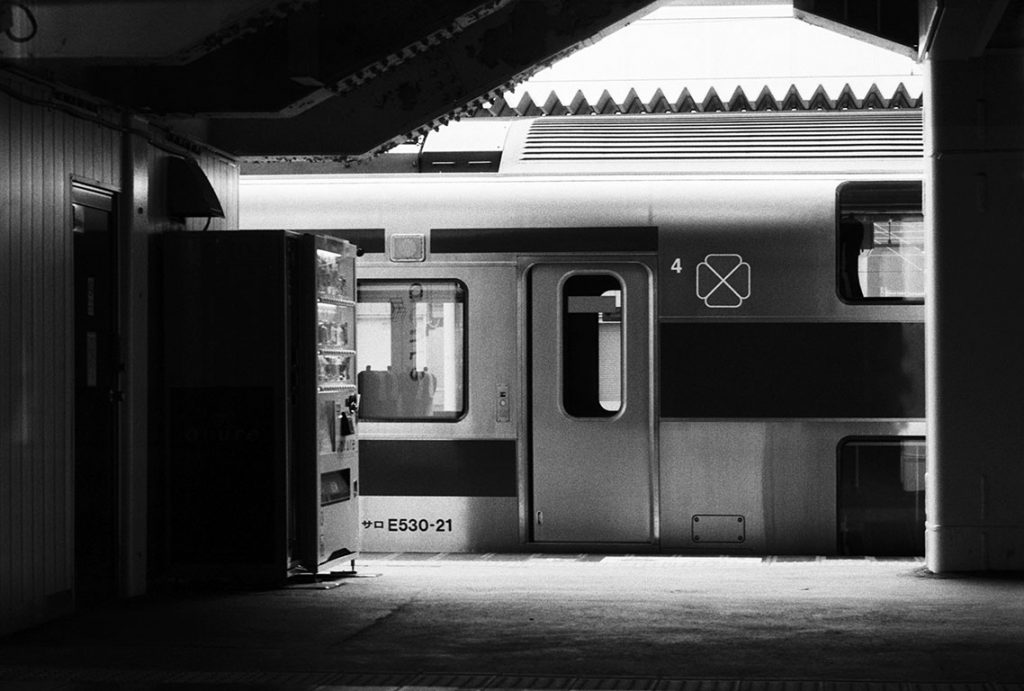
“Clickety-clack, clickety-clack, clickety-clack, goes the three-car local train carrying me back from Saidaiji to Okayama. I don’t know why but riding a local train, or even the shinkansen, in Japan makes me happy.” From my travel log, 2010, Okayama
This is true, I enjoy train travel in Japan, whether it be by shinkansen bullet train, rapid express train or local train. I calculated that I’ve travelled some 30,000 km during the course of this 47-prefectures project. In the early stages, I travelled by shinkansen since that would be the fastest and most efficient. As I ventured out into the more remote prefectures, though, I had to rely more on express trains because the Shinkansen links mostly the larger cities. Eventually, I learned to travel by local trains in the even more remote areas. In time, the local trains became my favored means of travel. Riding on such rains allows me to see and sometimes meet people and to get a better view of the countryside. As an added side benefit, I just enjoy train travel. It relaxes me.
Trains also are an essential element of Japanese culture. Virtually every city and town, no matter how big or small, is connected by a railroad. How different from the U.S. where highways and roads connect the towns and most people travel by car rather than by train.
One-man densha. Of all the varieties of local trains, the so-called “one-man densha” quickly became my favorite. Before I go further, let me explain the term “one-man densha.” It is a hybrid term, partly Japanese, partly English and partly Japanese-English. The term “densha” is easy – it is Japanese for “ train.” The term “one-man” is peculiar. It is written phonetically in Japanese as “ワンマン” and pronounced “wan-mahn”. The word, of course, is a Japanification of the English phrase “one man.” In context, “one-man” refers to the fact that a single person operates the car, and is the driver, the conductor and ticket collector. By the way, I use the term “one-man densha” as a literal translation of the Japanese term despite a possible non-politically-correct gender bias, though I have never seen a woman at the controls of a one-man densha.
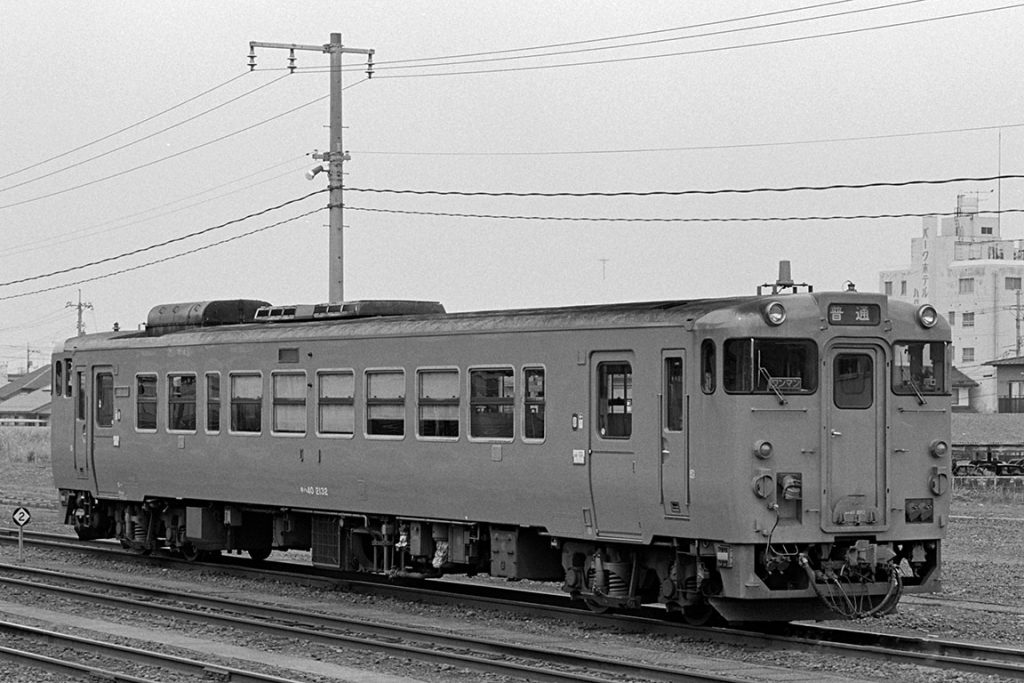
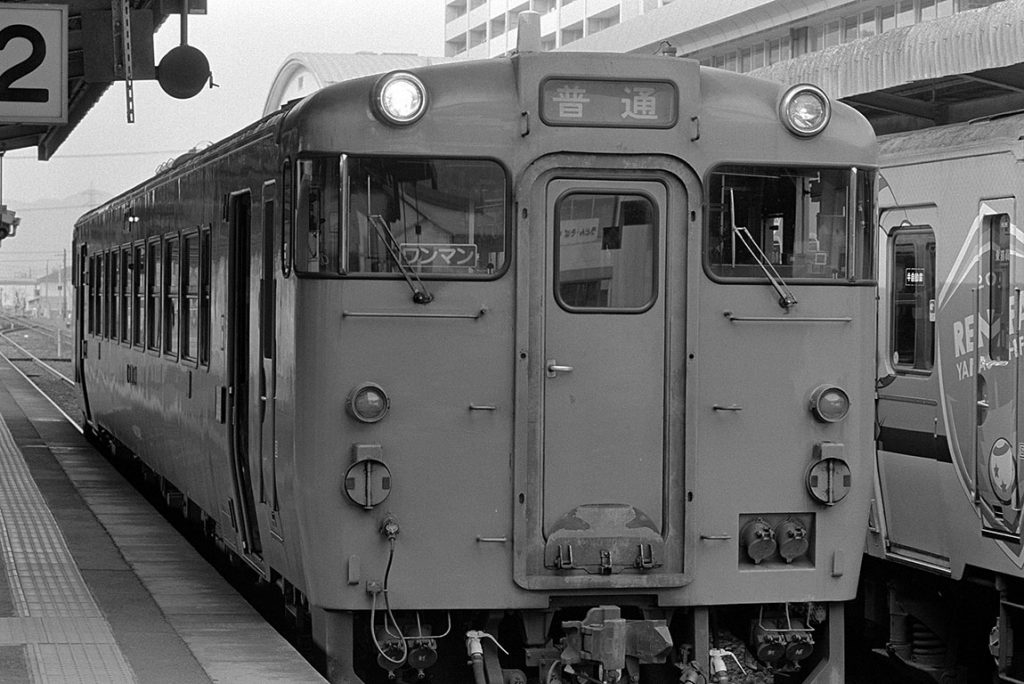
Some one-man densha have only one car while others have two or three cars. They travel slowly, maybe 30-40 km/hr and make every local stop. The cars tend to be old though well maintained. I became curious about how old were these trains, and once, when the train had reached its final destination, I asked the driver/conductor about this. He beckoned me to the front of the car and showed me the medallion that carries the date of manufacture – showa 56 (or 1981) – so 40 years or so. It still was running OK but with spartan interior – linoleum floor and hard seats (with only a thin cushion).

Though these trains are old, they are well maintained. They evoke a sense of history and nostalgia. Some old trains in Japan operate as tourist attractions or cater to train buffs (in Japanese “densha otaku” or train nerds). Other old trains, like the ones pictured, are simply local means of transportation.
The interiors of the one-man densha are austere. Here there are no reclining seats and no footrests. The seats are made of wood and have a minimum of padding. They are strictly no-frills.
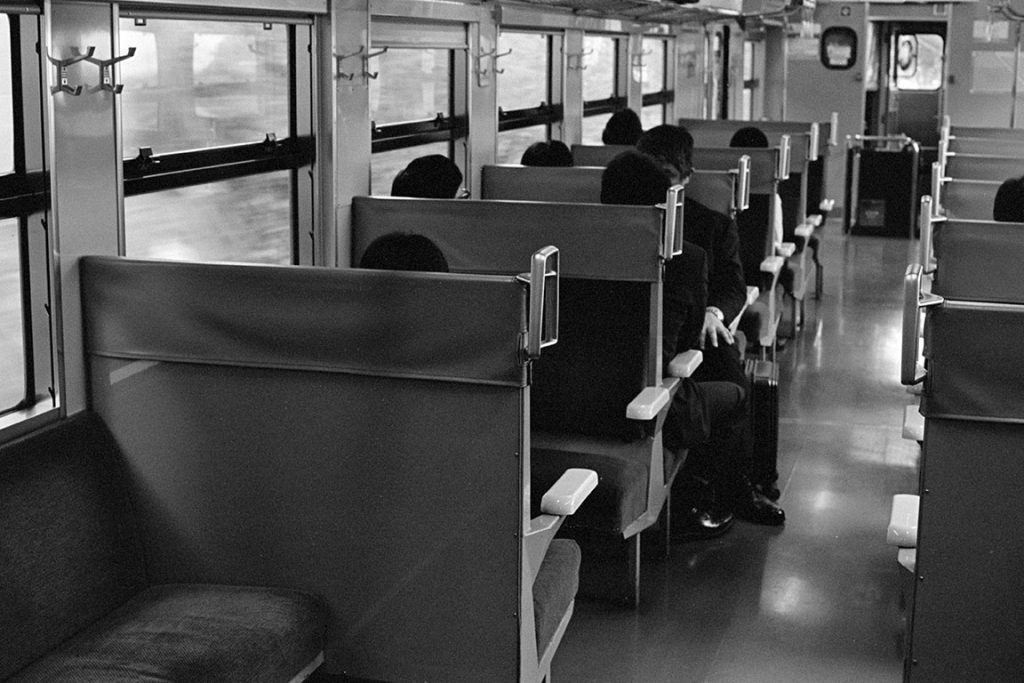
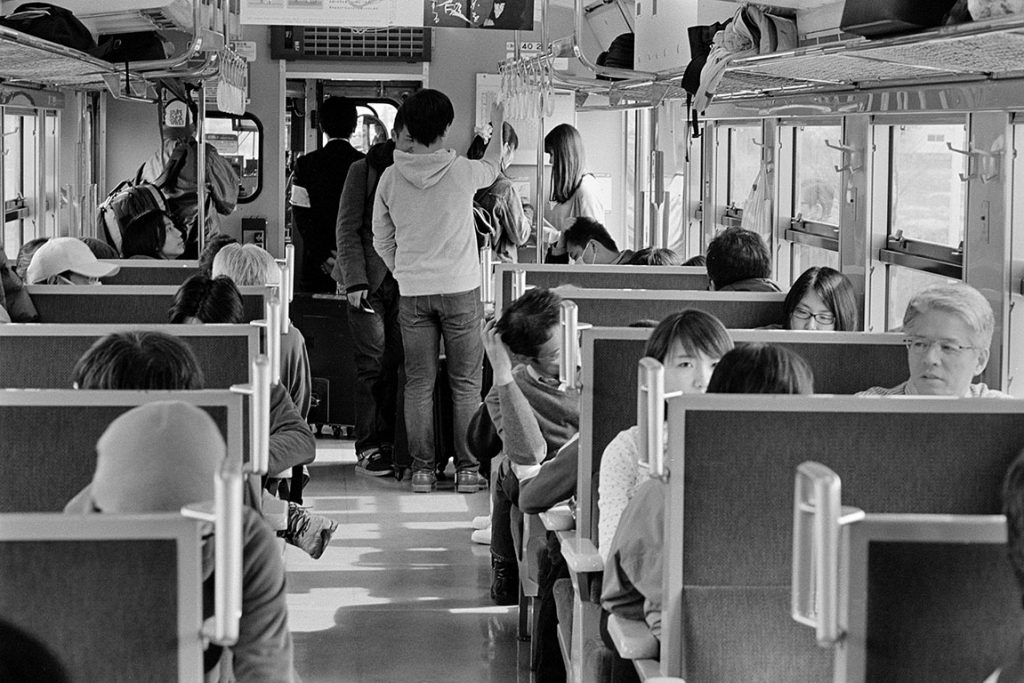
For most passengers, riding a one-man densha is just a means of travel, a way to get from one place to another. In that sense, these images show a single instant from an ordinary day. For me as an outsider, however, the images are rich with feeling. They are a throw-back to an earlier era, maybe 30 years ago or so, but for me it carries the sense from a much earlier period. My imagination sees these as scenes from the 1950s. OK, maybe the clothes and the hair styles would have been different, but the design of the interior of the train car suggests a retro feeling. At least that is my impression.
Well, such is my introduction to the one-man densha, focusing on the trains per se. Now let me show some other aspects of riding the trains through the prefectures: passengers, train stations and platforms.



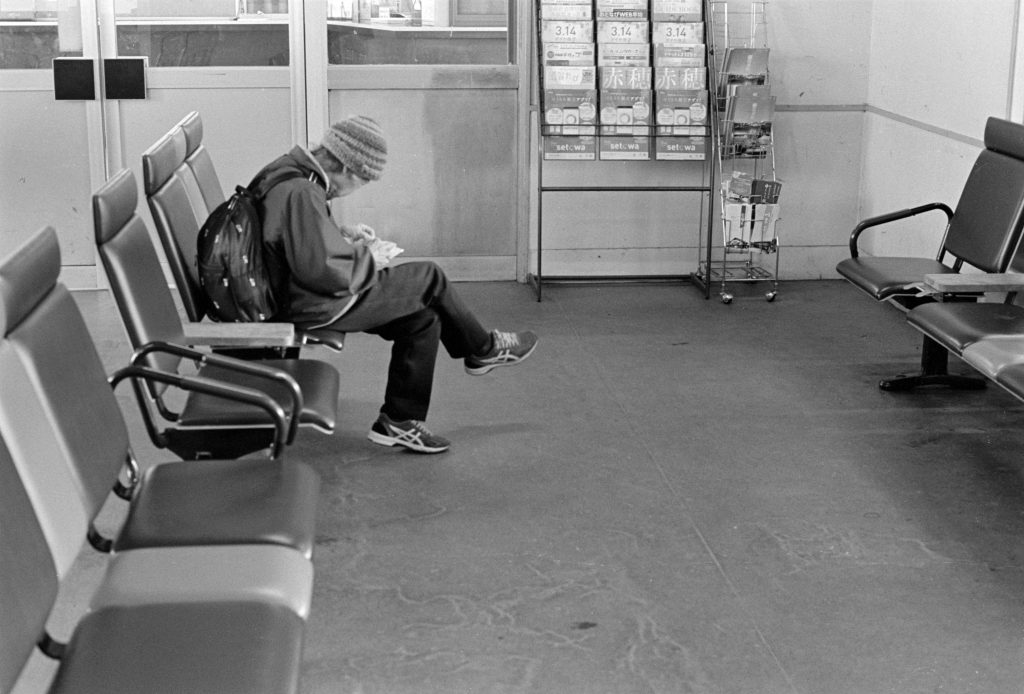
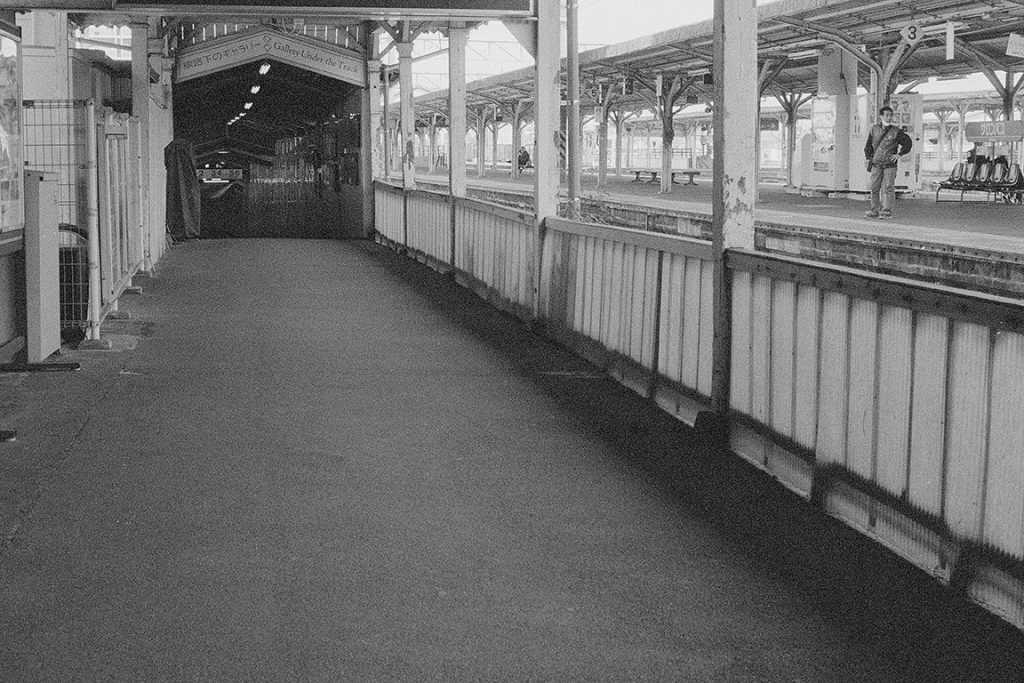
The stations in the more remote prefectures are old but well maintained. The wooden station houses are painted white. Inside, the floors would be well-worn linoleum whereas the floor of the platforms would be bare concrete, with white board fencing and corrugated metal roofing. It would be easy to imagine that this photograph was taken 40-50 years ago rather than this year.
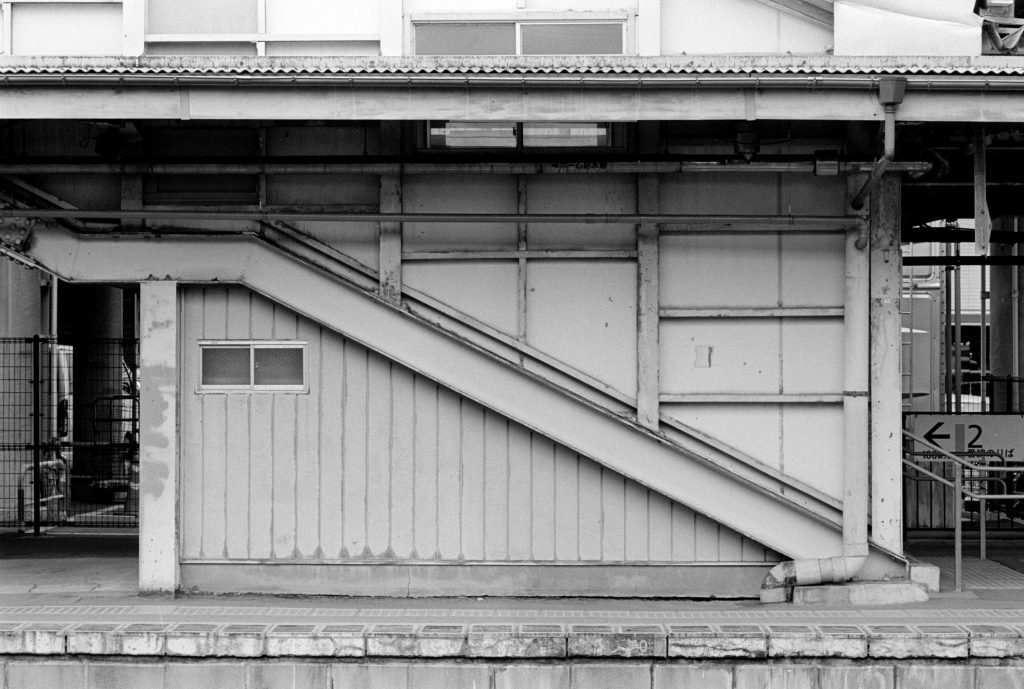

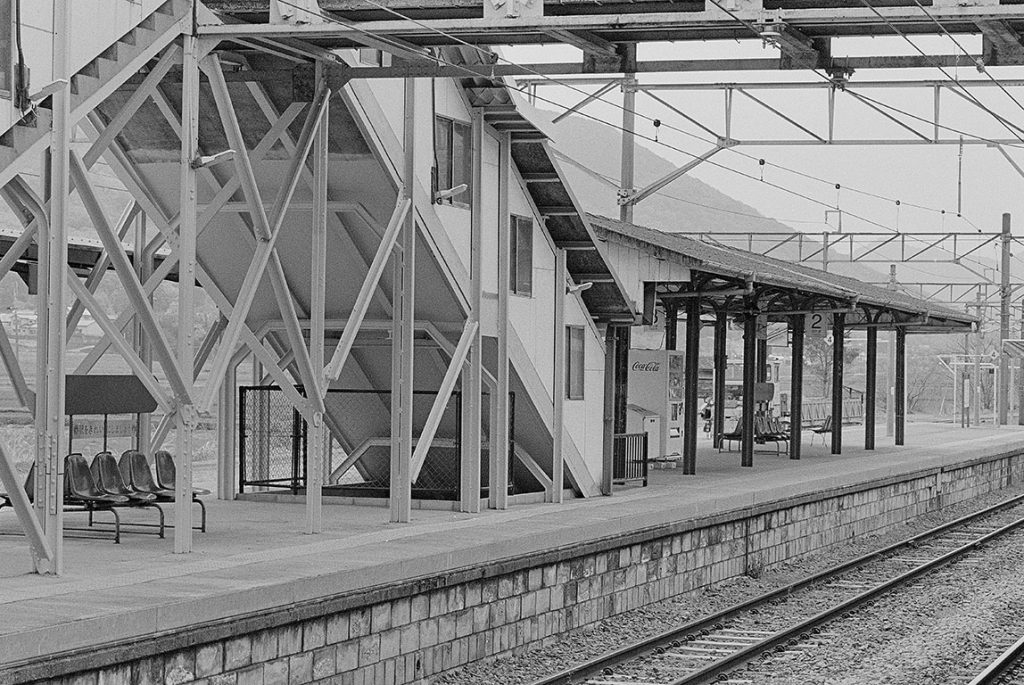
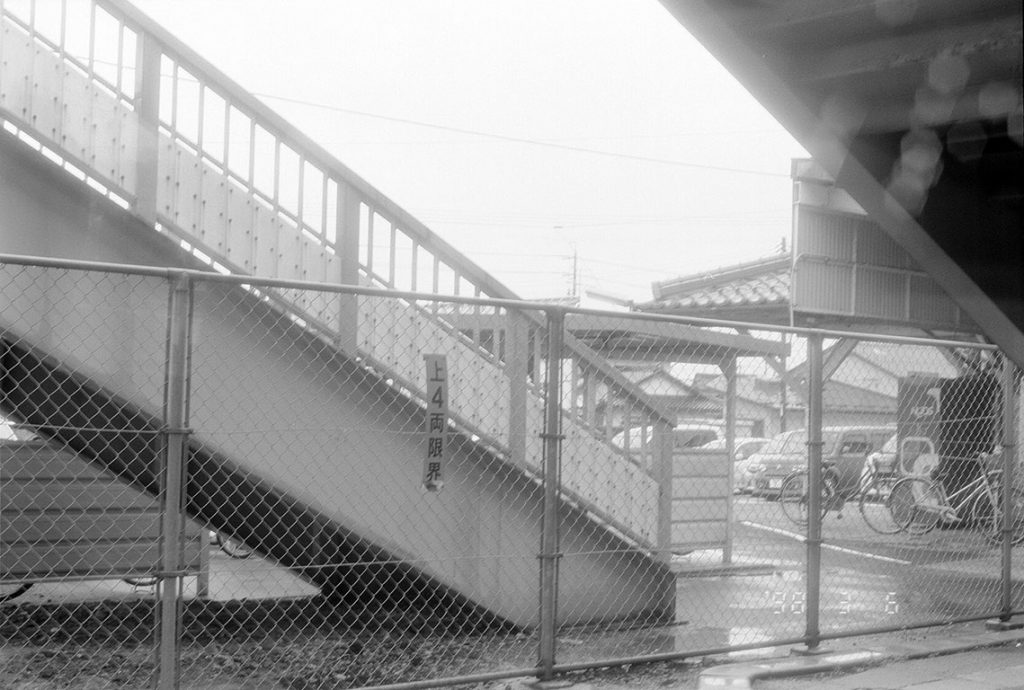
These four images tantalize me, taunt me. Sometimes they seem to be architectural studies – from a bygone era, to be sure. Sometimes they seem to be photodocumentary images, in line with my concept of the 47-Prefectures project, showing the backyards of Japan. Certainly these are common sights of the stations in remote area.
And then, sometimes, they seem to be playful images, something akin to…I’m not sure what but I want to say, “Something akin to ballet.” This effect comes from placing the four images together in sort of patchwork design.
I see that I’ve strayed quite far from the 47-Prefectures sequence. I guess that’s what happens when my little inner voice takes control of my pencil. Tomorrow by the light of day I may see things another way. [Ed. note: In fact, the description holds true even by the light of day.]
Somewhere on the Boso Peninsula in Chiba Prefecture. Sometimes a quick-grab shot yields a lucky outcome. The composition here is mostly geometric. The effect is soothing even though the angle is off kilter. This train stop could be most anywhere. Ambiguity lends strength to the image. The feeling says everything is OK. The scene is outside of time. Another minute and it would have vanished.

The unconventional composition contributes strongly to the message behind the image. What does it say? Again, I will take the photographer’s prerogative and leave the interpretation to the viewer. Maybe it has something to do with the absence of people in the frame.
Perhaps this is a photograph of nothing happening. The scene could be tranquil or it could be foreboding. In that context, maybe it is not a depiction of “nothing happening” but rather a depiction of “waiting.”

With this image I’m going to step outside the literal world of the one-man densha and enter a more abstract world. OK, it’s a window, a window in a train car. But the whole scene is so clean and crisp. Then again the view is distorted, just slightly, but enough to give the image an edge without being uncomfortable. Obviously the window had fogged over and this imparts a dream-like aura. The image is soothing and relaxing, giving a feeling of just this side of slumber – deeply relaxing. Just a few streaks on the foggy window give a hint of motion. For me, this is the feeling I sometimes get from riding a one-man train through the countryside.
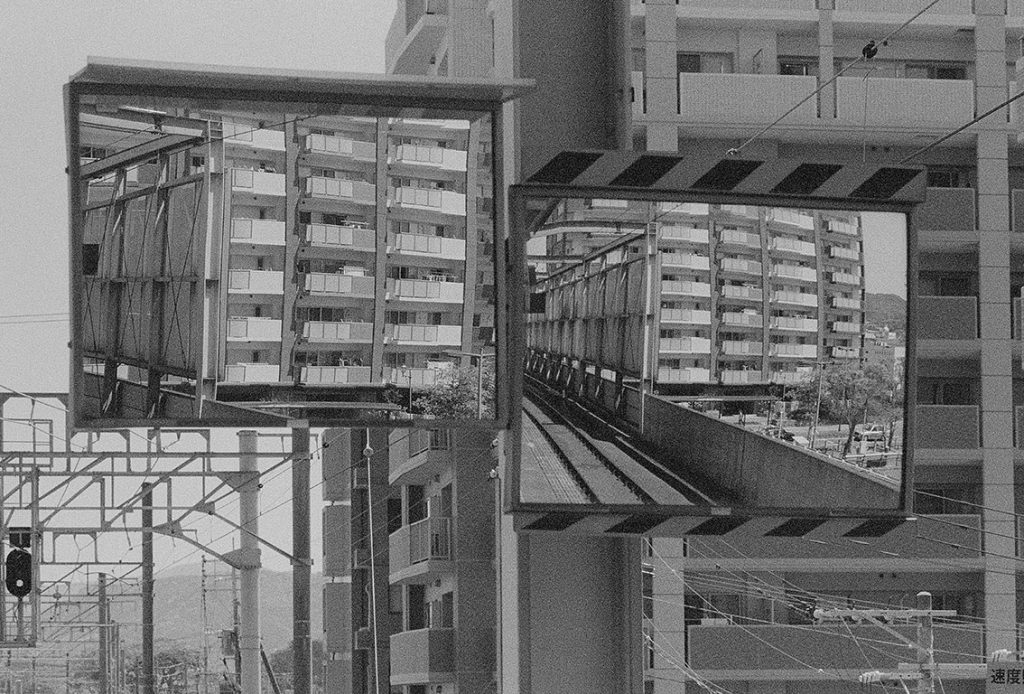



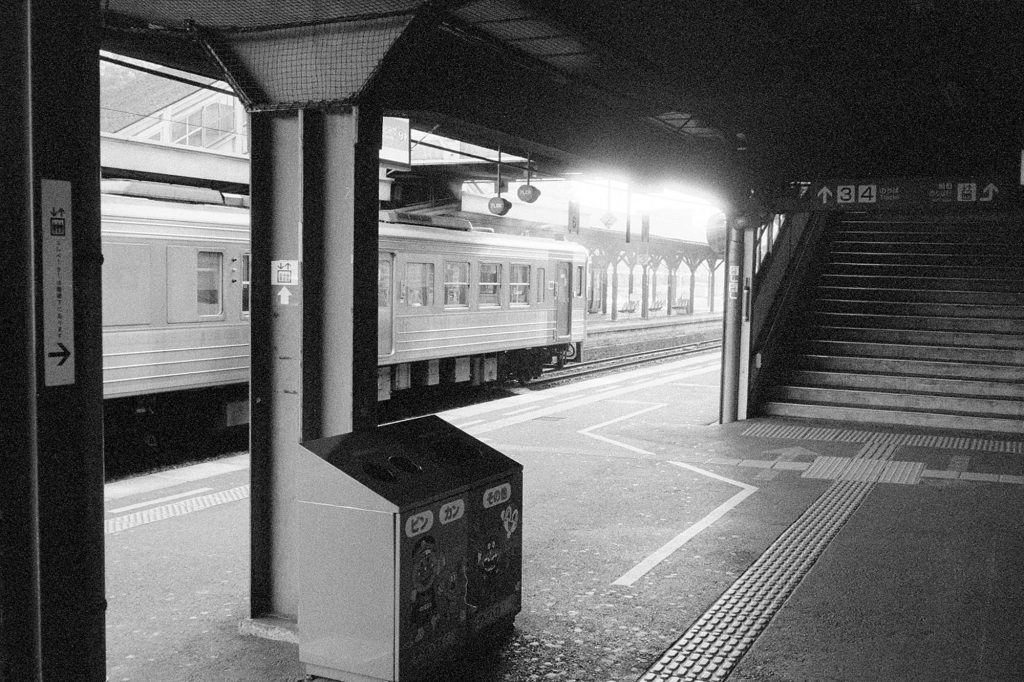
How often I have waited at local stations for my train to arrive, or to transfer trains. The waiting time has never been boring. The architecture of the stations, especially for smaller stations in the prefectures, is remarkably similar throughout Japan, and yet each one is distinct, too. This image holds no clue about location, but somehow portrays the sense of waiting. Then again, the dimly lit stairway – is it an invitation or does it hold a threat? In contrast, the intense illumination in the background casts an eerie feeling over the scene. No people are visible in the scene, probably it was early morning, but the mood is palpable.
A side benefit of the 47-Prefectures project, for me personally, was my introduction to the one-man densha. Quickly the one-man densha ceased to be just a means of transportation and became instead a sub-theme for the project. How did this transformation happen? If I could put it down in words I’d be a writer rather than a photographer, but let me try.
To me, the one-man densha is a symbol of Japanese culture. They are mix of ingenuity, simplicity, and efficiency. On a practical level, many people in the more remote areas rely on the one-man densha as they go about their daily lives. The one-man densha also are symbols of tradition, a reminder of a time when life was… I started to write “when life was simpler” but maybe that would be a romanticized view. Certainly, I cannot know how life was in Japan in the 1950s. On the other hand, riding the one-man densha has fired my imagination.
The passengers are another key element in the world of the one-man densha. Words fail me here. In the stating-the-obvious mode, the passengers are a mix of various groups – young, middle-aged, and older people. Students would be going to school in the early morning and returning home in the late afternoons. At other times the passengers would tend to be older people, and blue-collar or working-class people. Betraying my bias, I find the older passengers to be especially interesting as subjects. As I said, words fail me here. Maybe what I’m trying to say is that the passengers on the one-man densha seem to be refreshingly different from passengers on the shinkansen or on the trains in Tokyo. The passengers on the one-man densha seem to be more down-to-earth.
This installment of the Monochrome Chronicles has focused on one aspect of my journeys through the 47 prefectures of Japan, namely travel by local train. I remember many, many years ago when I was studying Japanese language in NYC, my sensei (teacher) used to describe to me the trains in Japan. She recommended that, should I have enough free time in Japan, traveling by local train would be an enjoyable way to see the countryside and smaller towns. And, that eating from the traditional Japanese lunch boxes sold at the local stations would be a good way to learn about regional foods. Her advice remained buried somewhere in the back of my brain until, about 20 years later, I embarked on the 47-prefectures project. She was right on both counts.
In the next episode of The Monochrome Chronicles, I’ll show you more about train travel during my 47 Prefectures project – specifically about three train trips that took me far from the conventional train routes.